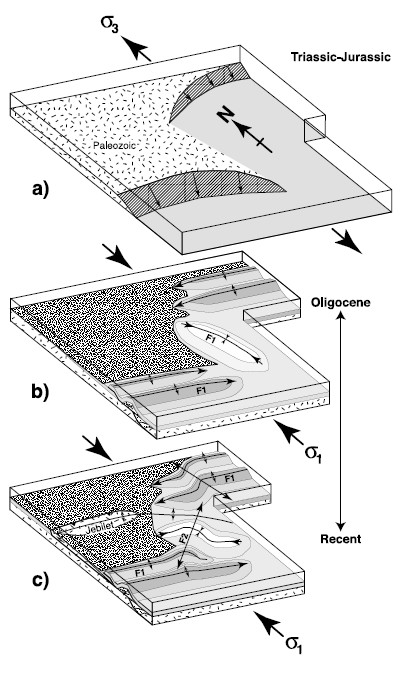Home |
Publications
Beauchamp, W.
Superposed folding resulting from inversion of a synrift accommodation zone,
Atlas Mountains, Morocco
in K. R. McClay, ed., Thrust Tectonics and Hydrocarbon Systems:
AAPG Memoir 82, p. 635-646, 2004.
Abstract
The conspicuous offset of the northern margin
of the High Atlas Mountains is composed of several large superposed folds, one
of which is known as the Ait Attab Syncline. The original northeast-trending syncline
(F1) was folded by a second set of fold axes (F2) that trend to the northwest.
The superposed folding was generated by one phase of compression, with thrusting
of synrift rocks northwestward
over a prior accommodation zone formed during rifting. This accommodation zone
is expressed in the exposure of synrift rocks, the exposure of Paleozoic strata
in the footwall, and a coincident offset of topography. Inversion was accomplished
by the transport of synrift strata along reactivated normal faults and newly formed
thrusts. The unique pattern of refolding is believed to be characteristic of inversion.
Copyright Statement
This paper was published by AAPG, and AAPG retains the copyright.
Link to AAPG
Key Figures and Captions
Figure 8. The inversion of a synrift accommodation zone (a)
by margin-normal shortening created first folds (F1) that are oriented parallel
to preexisting ramps and down-to-the-basin normal faults (b). Continued compression
across the accommodation zone results in the interference of the first F1 folds
and the formation of F2 folding (c). S1 = principal stress component; maximum
principal stress.

Home | Publications

